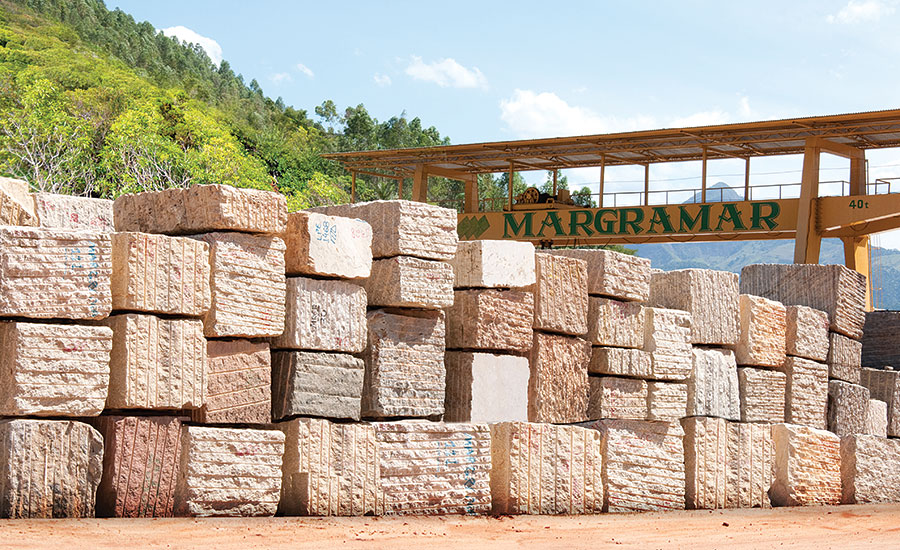Introducing the Mysteries of Granite Quarrying: Where Stamina and Style Meet
The world of granite quarrying is a world where the raw strength of nature assembles with human virtuosity to create structures that stand the examination of time with an air of elegance. From the depths of quarries to the thorough polishing in workshops, the process of changing granite into architectural marvels is an intricate dancing of tradition and technology. As we peer into the depths of this old craft, we begin to uncover the concealed details that shape the very essence of our developed atmosphere.
The Beginnings of Granite Quarrying
In the record of building background, the beginnings of granite quarrying are shrouded in a tapestry of old workmanship and geological wonders. Going back to old Egypt and Mesopotamia, the extraction of granite from quarries marked the beginning of a journey that would eventually result in the development of a few of the globe's most famous frameworks.
Granite quarrying's origins can be mapped to the competent artisans who acknowledged the stone's toughness and visual allure. Through a combination of primitive tools and large resolution, these early quarry workers discovered granite blocks that would end up being the foundation of worlds.
As worlds developed, so did the techniques of quarrying granite. The Romans, renowned for their design expertise, created advanced methods for extracting granite to construct monoliths, holy places, and roads that stood the test of time.
The heritage of these old quarrying techniques proceeds to form modern-day design, with granite remaining a sign of stamina and style in building and construction tasks around the world. (granite quarries in south africa)
Tools of the Quarrying Trade
The advancement of granite quarrying methods from ancient civilizations to modern-day times highlights the important function played by the devices of the quarrying sell shaping the sector's methods. In ancient times, quarrying devices were basic, often including blades, hammers, and wedges made from materials like bronze or iron. These devices required significant workforce and time to extract granite obstructs from quarries.

In addition, the intro of pneumatically-driven devices and high-powered equipment has actually dramatically reduced the physical labor required in quarrying operations, enhancing employee safety and efficiency. As the quarrying learn this here now market remains to innovate, the devices of the profession remain at the forefront of driving development and shaping the future of granite extraction.
Drawing Out Blocks of Granite
Using accuracy equipment and advanced methods, the removal of granite obstructs from quarries has become an advanced process in the contemporary quarrying market. The preliminary action entails identifying the location and dimension of the granite down payment to determine the most efficient extraction method. Once an appropriate site is chosen, the extraction process imp source starts with the drilling of openings for the positioning of dynamites. Managed blasting techniques are then used to disintegrate the granite into manageable sections.

Sprucing Up and Completing Techniques
To attain a perfect surface on granite blocks, skilled craftsmens employ a collection of careful polishing and ending up methods. After the initial removal and shaping procedures, the granite obstructs undergo a thorough sprucing up phase to boost their natural elegance and toughness. One common approach used in brightening granite is diamond abrasion, where commercial diamonds are made use of to grind and polish the rock to a smooth finish. This procedure not only develops a lustrous surface area but also makes sure uniformity in shade and appearance across the granite block.
In enhancement to polishing, completing techniques are put on further fine-tune the granite's look. These techniques may consist of flaming, developing, or cleaning, each offering one-of-a-kind structures and surfaces to suit different visual preferences. Flaming, for circumstances, includes revealing the granite surface to high temperature levels to produce a harsh, distinctive finish, perfect for exterior applications where slip-resistance is vital. Sharpening, on the other hand, provides a matte surface that is smooth to the touch, best for interior countertops and flooring. By very carefully choosing and using these brightening and finishing techniques, artisans can transform raw granite blocks into splendid pieces that showcase both stamina and sophistication.

Ecological Effect and Sustainability
With the growing focus on environmental consciousness in the market, granite quarrying techniques are increasingly inspected for their effect on all-natural sources and lasting sustainability. Additionally, the transportation of granite from quarries to processing facilities produces carbon discharges, additionally adding to ecological degradation.
To mitigate these effects and make sure sustainability in granite quarrying, market stakeholders are taking on numerous actions. Implementing sophisticated innovations to minimize power intake and water use, recovering quarried land for eco-friendly reconstruction, and advertising responsible sourcing practices are some techniques being utilized. Moreover, qualifications such as the Woodland Stewardship Council (FSC) and the Management in Power and Environmental Style (LEED) assistance consumers determine eco-friendly granite products.
Conclusion
Finally, granite quarrying is a procedure that calls for specialized devices and strategies to essence blocks of granite and polish them to a high level of coating. While the environmental impact of quarrying can be significant, initiatives are being made to enhance sustainability practices in the sector. In general, granite quarrying is a delicate equilibrium between utilizing the stamina and elegance of this all-natural stone click reference while lessening its influence on the setting.